Cauldron releases, summer 2022
When the boutique label Cauldron was launched two years ago, their mission statement promised “Horror, Giallo, Western, Crime, Action, Exploitation, and Cult Films” … two years and ten releases later, it’s still difficult to get a clear idea of what to expect from them. With the pandemic coinciding with their launch, there were delays with the second and third batches of two titles each, but the fourth and fifth came out close together this summer. Although I was a bit disappointed with the third pair – The Collingswood Story (2002) and 1974: Le posesion de Altair (2016) – I stuck with Cauldron and have just watched their four most recent releases, an odd, uneven assortment, but all interesting in their own ways.
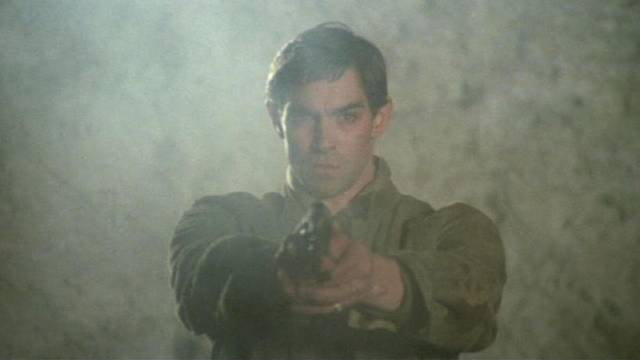
Contraband (Lucio Fulci, 1980)
The one which most closely conforms to my expectations also happens to be the most conventional. Lucio Fulci only made one poliziottescho and the impression I get is that it wasn’t a genre which particularly interested him. In Contraband (1980), Fabio Testi plays Luca, a small-time crook in Naples who makes a comfortable living smuggling cigarettes. After years of operating with little trouble, one night an operation is intercepted by the police – providing a water-borne chase sequence to get the plot started – and not long after, his brother is killed in a roadside ambush and his wife is kidnapped. Apparently someone is moving in to take control of Naples’ underworld action – someone known as Il Marsigliese, appropriately played by Marcel Bozzuffi, who excelled at cool, self-assured villains (and also played a lot of cops).
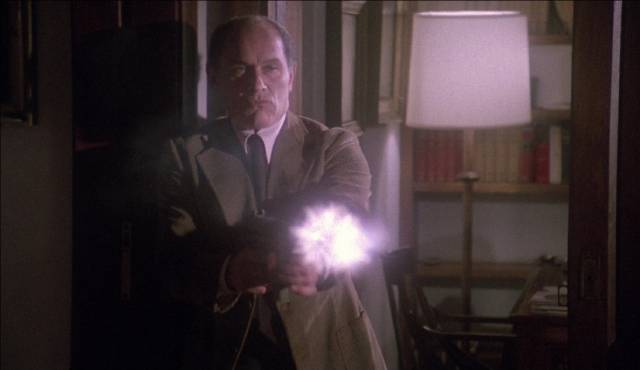
Luca embarks on a violent campaign to uncover this new enemy – for a hero, he’s a pretty ruthless killer – and the police remain only tangential as the body count rises, leading towards a pitched battle in the streets which leaves many characters dead. While the script by Fulci with Ettore Sanzo and Gianni De Chiara hits all the action beats and creates an interesting anti-hero, well-played by Testi, Fulci’s direction is plodding, at times just going through the motions without adding much in the way of style. Where he does show something of his usual self is in the graphic bursts of violence, which are much bloodier than usual in the genre.
The 4K transfer from the original negative looks excellent, and the disk includes a lot of new and archival interviews with cast and crew, plus a commentary by Bruce Holecheck, Troy Howarth and Nathaniel Thompson.
*
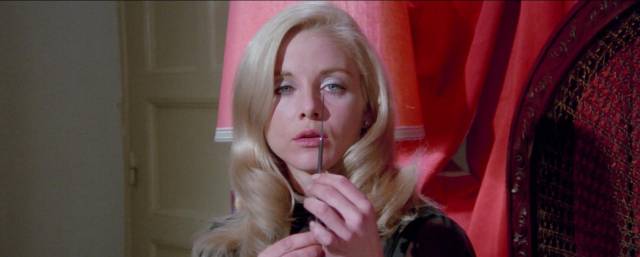
Murder in a Blue World (Eloy de la Iglesia, 1973)
Having been fairly recently introduced to the work of Basque filmmaker Eloy de la Iglesia by Severin’s three releases spanning two distinct periods of his career – the horror/thrillers of the Franco period and the more realistic Quinqui movies of the post-Franco reconstruction – I was interested to see Murder in a Blue World (1973), made immediately after The Cannibal Man (1972) and No One Heard the Scream (1973). De la Iglesia here becomes more overtly metaphorical than in the preceding movies which offered oblique critiques of Fascist Spain. For better or worse, he drew very obviously on Stanley Kubrick’s A Clockwork Orange (1971) for narrative and stylistic inspiration, though he can’t match Kubrick’s cinematic flair.
Located in the slightly off-kilter alternate reality favoured by filmmakers of the ’60s and ’70s, which drew on elements of modernist architecture and design to suggest a vaguely futuristic setting – like A Clockwork Orange itself, and Elio Petri’s The 10th Victim or Jean-Luc Godard’s Alphaville (both 1965) – de la Iglesia’s movie presents a dystopian society in which two very different forms of violence occur. There’s a roving gang, so obviously modelled on Kubrick’s droogs that it goes uncomfortably beyond homage; they prowl the night in a sports car, attacking random wayfarers and paying a “surprise visit” to a bourgeois family who have just settled down for the evening to watch A Clockwork Orange on television. The sterile modernity of the household matches that of the writer in Kubrick’s film and the gang beat the husband and rape the wife.
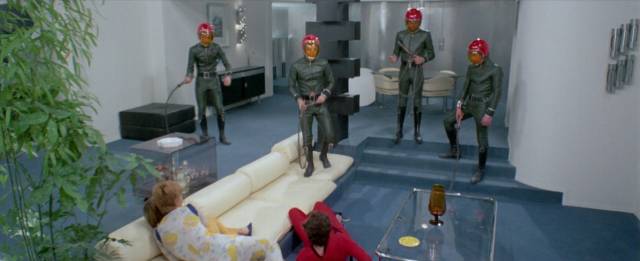
The other violence is committed by a nurse who, at the start of the film, receives an award for her selfless healthcare work. She releases patients from their suffering and moonlights by picking up misfits and outsiders in bars, taking them home and stabbing them to death with a scalpel during sex. While the gang represent the uncontrollable violence seething beneath the surface of Fascist repression, the nurse’s violence is an expression of the ethos of the State, the certainty of a natural superiority and the imperative to “cleanse” society of the unworthy.
Having been beaten and expelled from the gang, David (Christopher Mitchum) witnesses nurse Ana (Sue Lyon, another Kubrick reference!) disposing of her latest victim; he follows her home and spies on her nighttime activities, the two forms of violence gradually coming together, while Ana becomes increasingly troubled by the mind-control experiments being conducted by her former lover Victor (Jean Sorel) in a restricted wing of the hospital (Ludovico Technique anyone?), towards which David is heading. The levels of personal and state violence coalesce into a bleak conclusion devoid of Kubrick’s ironic “happy ending”.
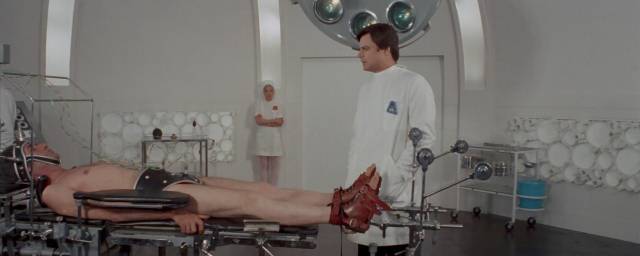
De la Iglesia took a risk by so extensively drawing on Kubrick’s work (at one point, Ana is seen reading Nabokov’s Lolita – yes, Lolita herself, now all grown up, reading the story of her own earlier fictional existence). While Murder in a Blue World does have its own coherence and points to make, the layers of reference serve as a kind of Brechtian alienation device which keeps the audience at a distance. Although more fantastic than de la Iglesia’s previous two films, it feels less original and less personal.
The 2K restoration looks fine, with vibrant colours and a detailed image. Extras include a Kat Ellinger commentary, a video essay by film scholar Dr. Xavier Aldana Reyes, an interview with actor and dubbing director Ben Tatar, an archival interview with Chris Mitchum covering his career (mostly in exile from Hollywood in Europe and Asia), plus a standard definition copy of the British VHS release under the title Clockwork Terror, cropped to 1.66:1 and a few seconds shorter than the Spanish cut.
*
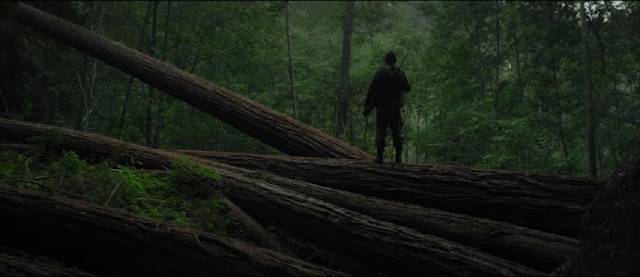
Sator (Jordan Graham, 2019)
Sator (2019), the second feature of Jordan Graham (who also wrote, produced, photographed, edited and composed the score), is a slice of atmospheric folk horror which is dense, allusive, and at times frustratingly vague. Switching seemingly randomly between 1.33:1 black-and-white and 2.40:1 colour, the film immediately establishes a sense of dread – an old woman, Nani (June Peterson), whose memory comes and goes, has a history of slipping into trances and producing automatic writing which she attributes to a supernatural entity (god? demon?) which inhabits the surrounding forest.
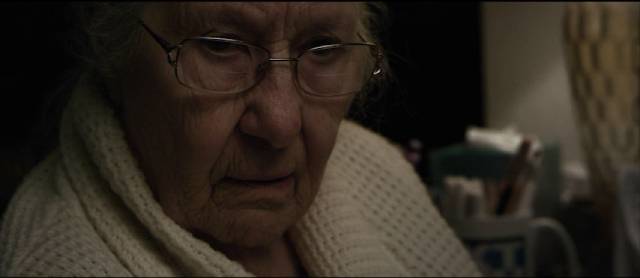
Her grandson Adam (Gabriel Nicholson) lives a solitary life in a cabin deep in the woods, monitoring wildlife cameras set up on animal trails. His brother Pete (Michael Daniel) visits Adam. There’s some tension rooted in the past, related to some family trauma. Things are glimpsed in the woods. But is all this Adam’s delusion or the manifestation of supernatural forces?
Some of the opaqueness of Sator comes from its origins in Graham’s own family history: Peterson is the director’s grandmother and the dementia is real, as is the history of her seemingly occult connections. This reminds me of Chad Crawford Kinkle’s Dementer (2019), which was a tale of possibly supernatural horror built around the director’s sister, who has Down Syndrome. As in that film, there’s an insular quality to Sator, a sense that there are things going on here not visible to an outside observer which are deeply embedded in the shared history of family members. Meanings, rooted in family trauma, are not fully accessible to those who haven’t directly experienced that history.
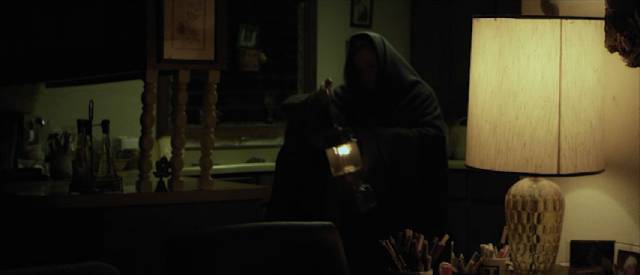
And yet Graham’s ability to create atmosphere and a sense of mystery is undeniable. The film is packed with evocative imagery and a feeling of dread which accumulates relentlessly. While not completely satisfying, it joins such films as Kinkle’s Jug Face (2013), Robert Eggers’ The Witch (2015), Juan Diego Escobar Alzate’s Luz: The Flower of Evil (2019) and Avery Crounse’s Eyes of Fire (1983) in the pantheon of modern folk horror.
An obsessively personal work, Sator is imbued with ultimately indecipherable mysteries, but Graham’s multi-faceted skills nonetheless draw you in and much of the imagery has a haunting quality, like half-remembered dreams, which linger in the memory even as the details of the elliptical narrative evaporate. The disk includes some behind-the-scenes material as well as a director’s commentary.
*
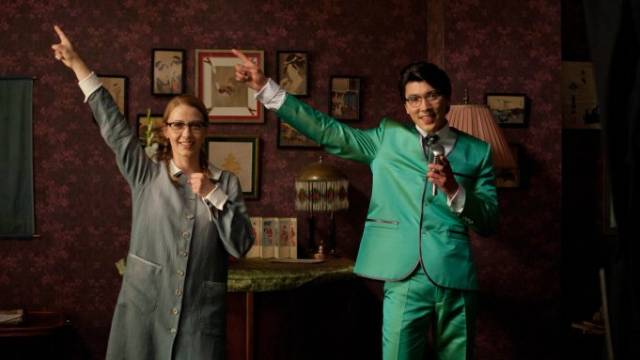
Liza the Fox Fairy (Karoly Ujj Meszaros, 2015)
Things always come down to a matter of personal taste, and for me the most satisfying movie of the batch is also the most unexpected. The wistful Hungarian fantasy Liza the Fox Fairy (2015) by co-writer/director Karoly Ujj Meszaros reminded me in tone and, to some degree, style of Jeunet and Caro’s Amelie (2001); its playful yet precise imagination, its sense of romance with a melancholy undertone, and perhaps most of all its central performance which risks a cloying feyness yet somehow remains fresh and touching.
Liza (Monika Balsai) is the nurse-companion of an elderly woman who was once married to a diplomat. Fascinated with Japanese culture, Liza can see the spirit of dead Japanese pop star Tomy Tami (David Sakurai) who, microphone in hand, is constantly distracting her and drawing her into song and dance. It gradually becomes apparent that the singing spirit wants to keep Liza for himself as he causes accidents to eliminate anyone else who claims her attention.
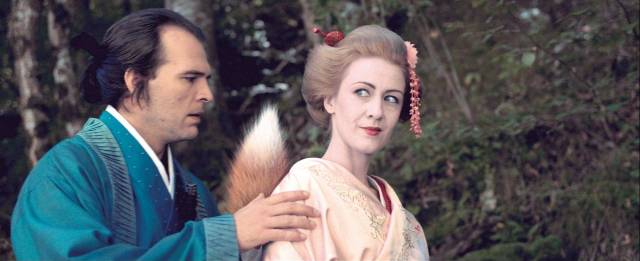
As more people die, naive police officer Zoltan (Szabolcs Bede Fazekas) is assigned to watch her closely. He quietly falls in love with her, doing odd chores, fixing things around the old apartment she inherited when the diplomat’s widow suddenly died. But she mistakenly believes that these kindnesses are being done by the womanizing Henrik (Zoltan Schmied), who had been hoping to inherit everything himself and disingenuously courts her. Liza’s connection to reality is gradually slipping; her reading of Japanese romances convinces her that she is a fox fairy, a woman possessed by a fox spirit who lures men and kills them. But the malevolent spirit is actually Tomy Tami, who wants Liza to join him in the spirit realm as his mate and has been manoeuvring her towards abandoning life and embracing death.
The mixture of whimsy, romance and encroaching darkness is a tricky one to sustain, yet – like Jeunet and Caro – Meszaros makes it seem effortless as he creates a flow of striking imagery which swirls around Balsai’s luminous performance. For me, at least, Liza is as disarming and charming as Amelie. The disk includes some behind-the-scenes material, an interview with Meszaros, a featurette on fox fairies, a music video and an audio essay by Kat Ellinger.
Comments